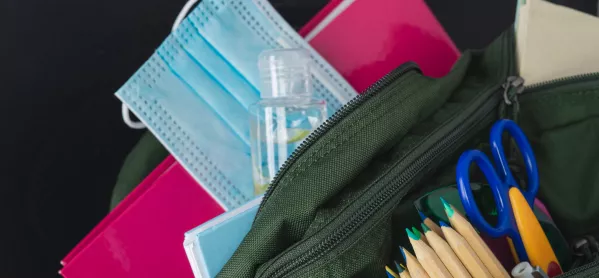6 safety tips for staff in schools during lockdown

Data from the Office for National Statistics (ONS) confirms that, in 2019, some 33 per cent of the total UK workforce were employed as critical or key workers, equating to 10 million people. The health and social care sectors form the largest of these key worker groups, followed by education and childcare.
A large number of these key workers have dependent children. Following the announcement of the most recent national lockdown on 4 January, many of these children will currently be attending primary and secondary schools in England as part of the key worker and vulnerable provision (this includes the children of teachers, too).
More key worker and vulnerable children are reported to be accessing this provision during the current lockdown, compared with the one that started in March 2020.
We can use this ONS data to estimate that millions of key workers and their children are likely to have continued to attend places of work and schools during the pandemic, and will continue to do so during this lockdown.
But what do we understand about the risk of transmission within key worker cohorts?
A recent paper published by the Public Health England Transmission Group highlights that a vast number of critical workers are employed in “public-facing” occupations, where the risk of exposure to the coronavirus is elevated due to “greater social mixing”, longer working hours, minimal social distancing and, for example, in the health sector, an increased likelihood of contact with infected people.
Key workers are likely to have at least 29 unavoidable daily contacts versus just four for those able to work from home. This figure is also grossly underestimated for certain key worker groups, such as teachers.
As such, lockdowns disproportionately shift the risk of infection to specific key worker cohorts, especially those living in deprived areas or in overcrowded housing.
Coronavirus: Protecting the children and staff in schools
A recent paper by the Children’s Task and Finish Group (TFC) demonstrates that “young people (aged 2-16) are much more likely than those aged 17-plus to be the first case in their household. In particular, those aged 12 to 16 are nearly seven times as likely to be the first case in their household, compared with those 17-plus”. Importantly, this increase is more pronounced when schools are open.
Considering the increased transmission of the new Covid variant and the rapidly rising infection and death rates in several parts of the country, it is vital that schools are provided with guidance and strategies to minimise viral transmission in schools open to key workers’ and vulnerable children during this lockdown.
Many of these strategies have been previously recommended by the Independent SAGE group of scientists as part of their Safer Schools Report.
1. Social distancing
With fewer students in school, social distancing should now be a priority in classrooms. Bubble sizes can be determined based on distancing requirements and classroom capacity. Importantly, as we gain a better understanding of the new variant and its potential to transmit faster, it would help to revert to the two-metre guidelines where possible.
Steps should be taken to minimise contact between bubbles outside the classroom, such as at breaktimes and lunchtimes. Furthermore, in secondary schools, students should not be required to move around the school and should remain in a designated classroom.
2. Ventilation
Despite the cold weather, good ventilation is paramount for reducing infections caused by a virus that transmits primarily through aerosols. Open windows and doors, and scrap “no coats in classrooms” policies. Instead, encourage students to dress in warm outdoor clothing.
3. Face masks
These should be mandatory in all indoor spaces in secondary schools, including classrooms. Furthermore, students in primary schools should not be discouraged from wearing face masks if they are able to do so safely.
4. Self-isolation
In the event of a positive case within a bubble, all students within the bubble should be required to self-isolate for the required period regardless of proximity and duration of contact with the positive case.
5. Routine asymptomatic testing
All key worker and vulnerable students and teachers, in both primary and secondary schools, should be routinely tested, regardless of symptom presentation, using lateral flow tests.
This could be two tests a week, three days apart to ensure detection of any false negative cases in the first instance. Secondary schools currently have stocks of lateral flow tests available that could be repurposed accordingly.
6. Updated symptom list
Schools should be provided with an extended list of symptoms as available via the Centers for Disease Control and Prevention (CDC) website. Any student or teacher showing these symptoms can be tested by lateral flow test or traditional PCR testing depending on symptoms.
In light of the new coronavirus variant, such unified guidance from the government could break potential chains of transmission in schools and into the homes of key worker groups, including teachers. The government should support schools in implementing these strategies where necessary.
Shetal Arjan-odedra is a former virologist and now trainee teacher
You need a Tes subscription to read this article
Subscribe now to read this article and get other subscriber-only content:
- Unlimited access to all Tes magazine content
- Exclusive subscriber-only stories
- Award-winning email newsletters
Already a subscriber? Log in
You need a subscription to read this article
Subscribe now to read this article and get other subscriber-only content, including:
- Unlimited access to all Tes magazine content
- Exclusive subscriber-only stories
- Award-winning email newsletters
